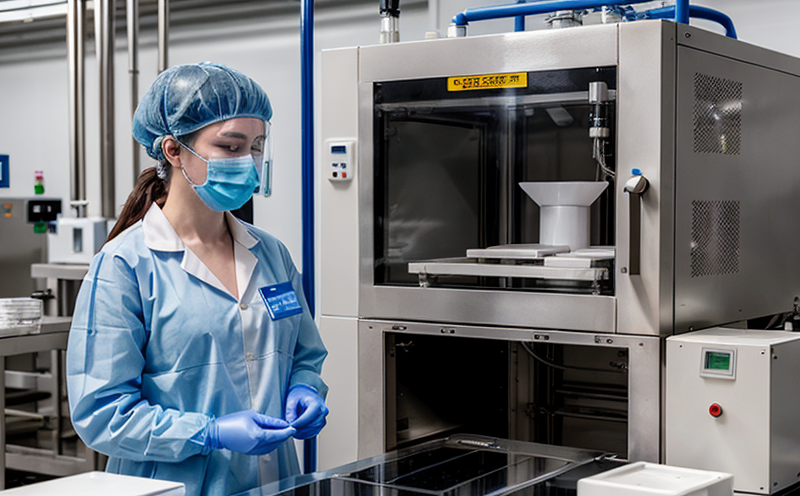GMP Visible Particulate Matter Testing
Good Manufacturing Practice (GMP) is a set of regulations intended to ensure that pharmaceutical products are consistently produced and controlled according to quality standards. The GMP requirements apply not only to the manufacturing process but also extend to raw materials, packaging, storage, and distribution. One critical aspect of ensuring product quality under GMP is the detection and quantification of visible particulate matter.
Visible particulates are solid or liquid contaminants that can be seen by eye or with simple magnification. Their presence in pharmaceutical products can lead to serious safety concerns for patients, especially when these particles reach critical areas such as injection sites. The identification and control of these particulates is thus a fundamental requirement under GMP.
The testing process involves the collection of samples from various stages of production or packaging processes, followed by visual inspection using appropriate equipment like light microscopes. The acceptance criteria for visible particulate matter are strictly defined in international standards such as ISO 14644 and USP General Chapter. These guidelines specify that any visible particulates must be identified, categorized based on size and type (such as fibers, lint, or other contaminants), and reported according to standardized forms.
In practice, the testing procedure begins with sample preparation, which includes aseptic sampling from production lines or packaging machines. Samples are then transferred into appropriate containers for transport to the laboratory where they undergo visual inspection under controlled lighting conditions. The size range of particulates that can be detected varies depending on the equipment used; typically, this ranges from 10 microns upwards.
For accurate quantification and categorization, laboratories employ advanced optical instruments capable of capturing high-resolution images of particles within specified fields of view. This information is then analyzed to determine compliance with GMP standards. Laboratories also perform background checks on production environments to minimize potential sources of contamination. Regular calibration of equipment ensures consistent results across different testing sessions.
The importance of this type of testing cannot be overstated, as even small quantities of particulates can compromise product quality and potentially harm consumers. By adhering strictly to GMP guidelines for visible particulate matter detection, manufacturers ensure that their products meet safety standards set forth by regulatory bodies worldwide.
Quality and Reliability Assurance
- Consistency in Results: Our laboratory adheres to strict protocols for every step of the testing process, ensuring reliable results that can be reproduced consistently.
- Compliance with Standards: We are committed to maintaining high-quality standards by complying fully with relevant international norms such as ISO 14644 and USP General Chapter.
In addition, we maintain detailed records of all tests conducted, including raw data, observations, and conclusions drawn from each analysis. This documentation allows us to trace any issues back to their source if necessary, thereby enhancing our overall quality assurance efforts.
Environmental and Sustainability Contributions
- Eco-friendly Equipment: We use state-of-the-art equipment designed to minimize energy consumption while maintaining optimal performance levels.
- Sustainable Practices: By continuously improving our processes, we aim to reduce waste and promote more sustainable practices throughout the entire testing lifecycle.
Incorporating these environmental considerations into our operations demonstrates our commitment towards sustainable development goals. Our goal is not only to provide accurate GMP compliance testing but also to contribute positively to global environmental health.
Use Cases and Application Examples
- New Drug Development: During clinical trials, pharmaceutical companies must ensure that their new drugs do not contain unacceptable levels of visible particulates. Our testing services help them meet these stringent requirements.
- Manufacturing Process Monitoring: Regular monitoring allows manufacturers to identify and rectify any issues early in the production cycle before they escalate into major problems.
A real-world example of how our service is utilized includes a case where a pharmaceutical company faced regulatory scrutiny due to reported cases of particulate matter in one of its products. Through rigorous testing conducted by our team, we identified and resolved the source of contamination, thereby restoring confidence among stakeholders.





